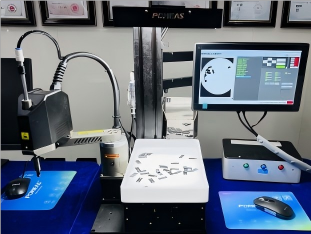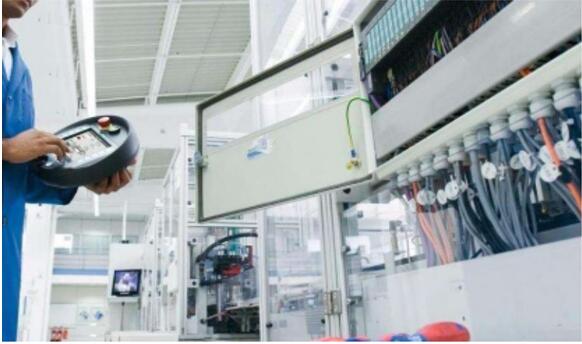
In our daily lives, many seemingly simple tasks—such as inspecting product quality, guiding robotic movements, and even medical diagnostics—rely on a crucial technology: machine vision lenses. These lenses act as the “eyes” of machines, enabling them to “see” and understand their surroundings. So, in which fields do machine vision lenses play a vital role? Let's take a brief look.


Machine vision lenses are specialized optical components designed to capture clear images and transmit them to computer systems for analysis. Unlike ordinary camera lenses, they typically offer higher precision, stability, and adaptability, enabling them to perform complex visual tasks across diverse environments. Simply put, machine vision lenses grant machines “visual capabilities,” allowing them to replace or assist humans in performing numerous tasks.
In industrial automation, machine vision lenses play a crucial role. For instance, on automotive manufacturing or electronics production lines, these lenses rapidly inspect component dimensions, positioning, and defects to ensure consistent product quality. They can “see” minute flaws imperceptible to the human eye, significantly boosting production efficiency and safety.
Quality inspection represents another vital application. In the food, pharmaceutical, and consumer goods industries, machine vision lenses inspect packaging integrity, label accuracy, and even identify foreign objects. This not only reduces labor costs but also minimizes human error risks, safeguarding consumer rights.
Medical imaging also relies heavily on machine vision lenses. Integrated into endoscopes, microscopes, and diagnostic equipment, they help physicians obtain high-definition internal images to assist disease diagnosis and surgical procedures. For instance, during endoscopic examinations, lenses provide clear visual fields, enabling physicians to observe pathological areas with greater precision.
In traffic monitoring, machine vision lenses power intelligent transportation systems, enabling real-time road condition surveillance, license plate recognition, and violation detection. This enhances traffic management efficiency, reduces accident rates, and promotes safer, more convenient travel.
Additionally, machine vision lenses are extensively applied in robotic navigation. Whether in industrial robots or service robots, these lenses enable environmental perception, obstacle avoidance, and precise task execution. In scientific research, machine vision lenses facilitate microscopic observation and astronomical exploration, driving scientific advancement.
Product recommendation
TECHNICAL SOLUTION
MORE+You may also be interested in the following information
FREE CONSULTING SERVICE
Let’s help you to find the right solution for your project!

- APPICATION CASE
- RESOURCE CENTER
- DOWNLOAD CENTER
SOLUTIONS SUPPORT
- ZOOM LENS SELECTION TOOL
- TELECENTRIC LENS SELECTION TOOL
- FA LENS SELECTION TOOL
- ZOOM RATIO TABLE
- CERTIFIED MODEL
SELECTION TOOL
- WHY POMEAS
- FAQ
- PRIVACY POLICY
- TERMS OF USE
- DELIVERY & RETURN POLICY
CUSTOMER CARE
 ADDRESS
ADDRESS
Add.:No.68, Chongwei Road, Baizhoubian, East district, Dongguan, China, 523000
CONTACT
 Tel:+ 86-0769-2266 0867
Tel:+ 86-0769-2266 0867
 Fax:+ 86-0769-2266 0867
Fax:+ 86-0769-2266 0867
 E-mail:marketing@pomeas.com
E-mail:marketing@pomeas.com

Wechat QR code

 ASK POMEAS
ASK POMEAS  PRICE INQUIRY
PRICE INQUIRY  REQUEST DEMO/TEST
REQUEST DEMO/TEST  FREE TRIAL UNIT
FREE TRIAL UNIT  ACCURATE SELECTION
ACCURATE SELECTION 